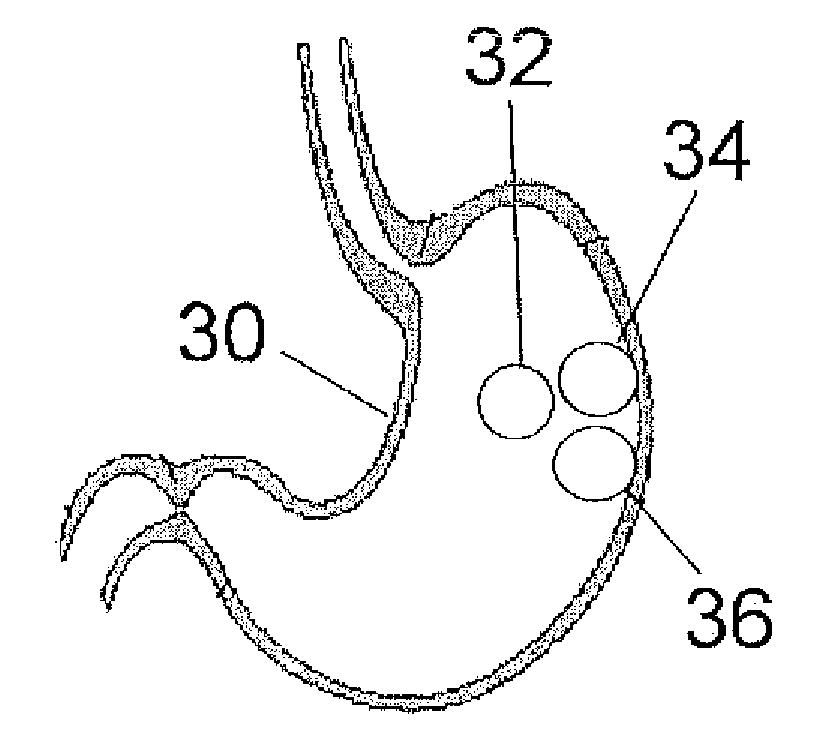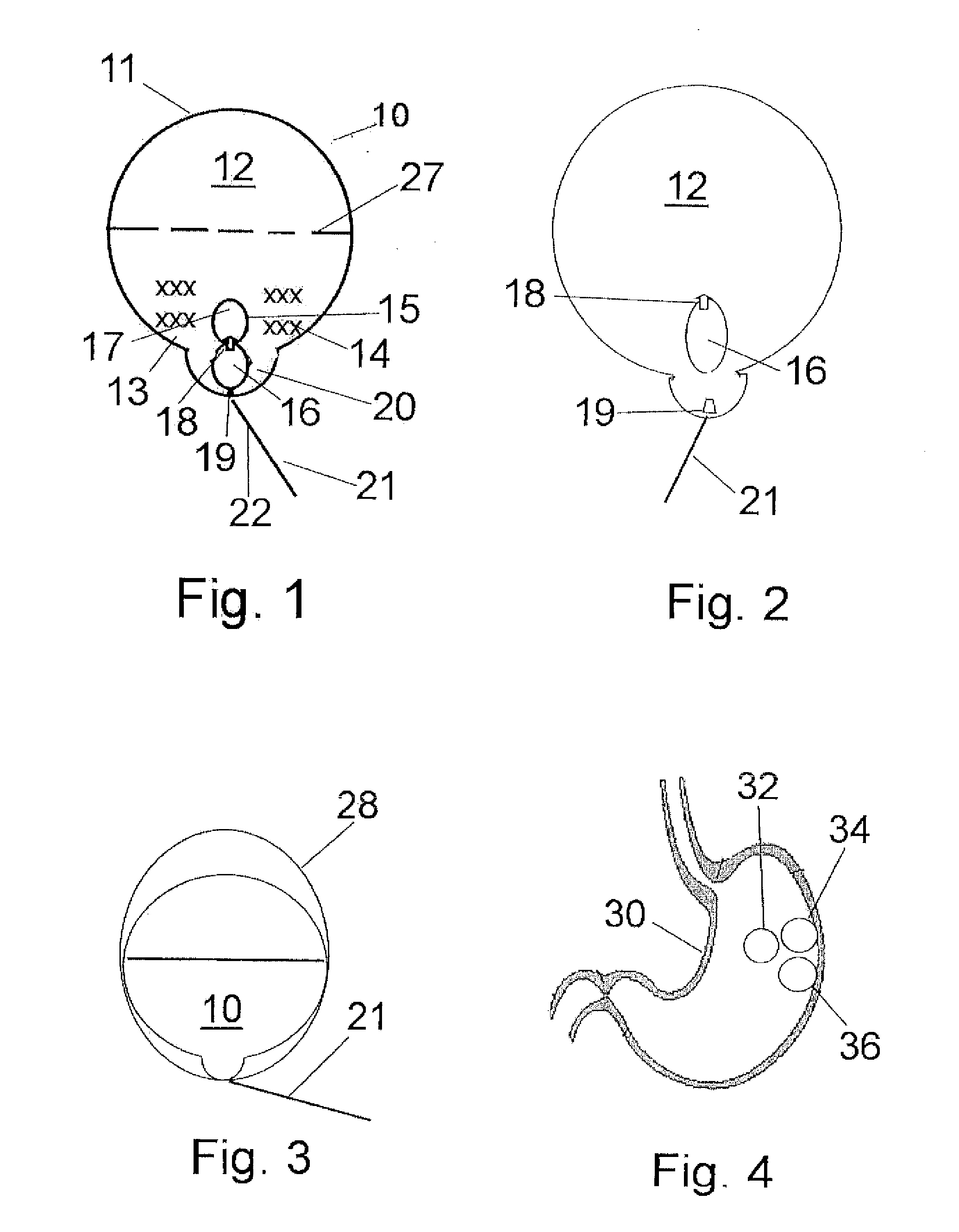Self-inflating and deflating intragastric balloon implant device
a balloon implant and self-inflating technology, applied in the field of intragastric balloon implants, can solve the problems of affecting the treatment of obesity, unable to achieve measurable weight loss of overweight people, and plagued researchers and surgeons for decades, and achieves the effects of reducing the risk of obesity
- Summary
- Abstract
- Description
- Claims
- Application Information
AI Technical Summary
Benefits of technology
Problems solved by technology
Method used
Image
Examples
Embodiment Construction
[0043]As shown in FIG. 1, a wax coated biocompatible intragastric balloon 10 is formed from a wax-coated membrane 11, and has an inner space or lumen 12, within which are housed non-toxic chemical agents, generally citric acid 13 and sodium bicarbonate 14, which react to form carbon dioxide gas to inflate the balloon. A free floating, dual chamber liquid capsule 15 is disposed in the lumen, with chambers 16 and 17, and a unidirectional valve 18 therebetween. The lumen 12 is hermetically sealed, usually with a plug or a weak point 19. A seat or pouch 20 may be created in the lumen to retain the capsule temporarily prior to the inflation of the balloon.
[0044]By squeezing the chamber 16, a liquid contained within the chamber, generally a water solution of citric acid or acetic acid, or plain water, will be transferred through the valve 18 into chamber 17, which will dissolve a predetermined period of time (e.g. 2-3 minutes) following exposure to the liquid.
[0045]A string-like suture st...
PUM
 Login to View More
Login to View More Abstract
Description
Claims
Application Information
 Login to View More
Login to View More - R&D
- Intellectual Property
- Life Sciences
- Materials
- Tech Scout
- Unparalleled Data Quality
- Higher Quality Content
- 60% Fewer Hallucinations
Browse by: Latest US Patents, China's latest patents, Technical Efficacy Thesaurus, Application Domain, Technology Topic, Popular Technical Reports.
© 2025 PatSnap. All rights reserved.Legal|Privacy policy|Modern Slavery Act Transparency Statement|Sitemap|About US| Contact US: help@patsnap.com


